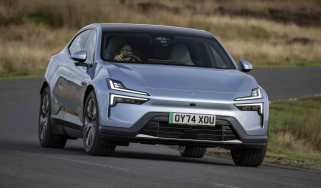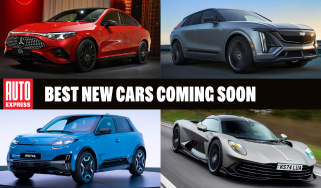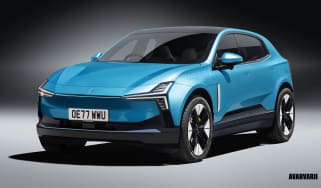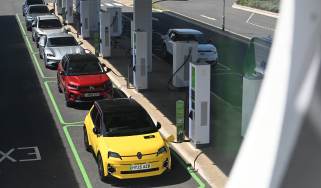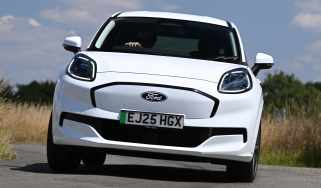What is Polestar? Complete brand, model and tech guide for UK car buyers
It was supposed to be the next big thing. Can Polestar turn its fortunes around?
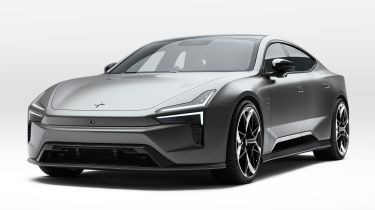
Polestar has an unusual claim to fame: the UK is its biggest single market. Given that our volume is eight times smaller than the US’s, and China’s market is double that, this is obviously something of a mixed blessing.
But, registrations have doubled year-on-year, and the Scandi-Sino brand will take that. After all, 2024 was tough, with the New York Stock Exchange threatening to delist Polestar’s stock because it was tracking below a dollar; the company burned around $400 million in a three-month period and founding CEO Thomas Ingenlath was forced to step down.
Enter Michael Lohscheller, the marathon-running, UK-loving veteran who used to head up Opel. He rose to CEO-level at Stellantis, a group that makes cost control an art form, so if anyone can get Polestar in the black, it’s Lohscheller. He’s certainly up against it: the brand lost $1 billion in the first half of 2025.
“We do see a lot of improvement on the financials: revenue is up 56 per cent, costs are coming down and operational losses are reducing,” says Lohscheller in his trademark rapid-fire, Germanic delivery.
The high-riding 2 hatch may have shifted 180,000 units since its launch during the Covid pandemic, but Polestar’s growth has been choked by a year-long delay getting the 3 SUV and 4 saloon into production. Lohscheller says using contract manufacturing at Geely family factories saves cash on assets and people, but the brand’s reliance on Volvo technology did slow the cars’ introduction.
Polestar’s big headache is its reliance on Chinese manufacturing, which currently scuppers US imports of the 2, 4 and new, high-performance 5 sport GT. Thankfully Volvo manufactures the 3 in South Carolina, and Korean-factory exports of the 4 begin soon. The Chinese-built models also incur 19 per cent duties landing in Europe, but the home market is limited: Polestar is seen as being Swedish in China, which unfortunately limits its sales as buyers have pivoted from western to homegrown brands.
So the next new Polestar – the 7 compact SUV – will be assembled in Slovakia. “77 per cent of our sales are in Europe,” the boss tells us. “So shipping cars around the world is not the best business model for various reasons: tariffs and CO2 emissions. The more cars we can produce in Europe, the better.”

Set to arrive in 2028, the 7 will be a rival to the BMW iX1 and Mercedes EQB. European autos analyst Matthias Schmidt predicts “the Polestar 7 could be one to watch”.
Geely founder Li Shifu announced his Taizhou Declaration last year, calling for his brands to boost hardware, software and powertrain co-operation, to improve scale and eliminate internal repetition and competition. That’s why Lotus and Zeekr jointly utilise a new performance hybrid, and the 7 will be based on a Geely-wide platform and shared software stack.
The 7 will be the most compact Polestar yet, similar to the 2 in price – just above £40,000. “It will be a premium car and it will go into a segment which is much larger [than existing models]. We will [ask]: ‘what are the competitors from BMW, Land Rover and so on?’,” says Lohscheller.
Polestar’s ability to command premium prices – when most Chinese competitors are attacking the mainstream – is another reason why analyst Schmidt is confident that the brand can survive the current turmoil.
New design chief Philipp Römers, headhunted from Audi, will shape the crossover’s design. It will feature dual L-shaped headlamps, flared wheelarches and horizontal graphics to stretch the width, as Römers seeks to boost Polestar’s performance credentials.
But the 7 also needs to attract women. “It’s a segment for slightly younger customers,” explains Lohscheller. “When we looked at the first design sketches [we had to consider] female customers, because that’s a big, influential group.” Warmer and more colourful interior designs will also broaden the appeal.
Polestar is a UK success story. Lohscheller attributes it to high-performing retailers and the local leadership team, Chinese EVs only facing a 10 per cent tariff compared with the EU’s higher rates, ZEV mandate pushing EV quotas, and company-car tax breaks combining to allow the right EVs to fly.
But a total of 44,482 sales globally in the first nine months of the year is still small beer. Would Lohscheller go for the nuclear option and abandon the brand’s strict EV-only philosophy with hybrid?
“Obviously we discussed that a lot,” he tells us. “But if I said to our community, we go hybrid, they would go absolutely bananas and say, ‘we are the EV brand’. Our EV focus is good, no compromises – and that’s what people value, right?”
| UK models: | Two saloons, two SUVs |
| Our pick: | New 5 sounds fun, with 871bhp and 0-62mph in 3.2secs |
| How big in China? | “Tiny”, says the boss |
| 2024 global exports: | 44,851 |
| 2025 UK registrations: | 12,630 |
| Retailer network and warranty: | 14 dealers; three-year, 60,000-mile warranty, eight years for electric vehicle batteries |
| We say: | It has a chance |
Chinese car brands ranked by UK impact
Below is our Chinese power list, with all 17 brands ranked on current and potential UK market impact. Click the links to explore each manufacturer in detail...
| Rank | Brand |
| 1 | MG |
| 2 | BYD |
| 3 | Chery |
| 4 | Changan |
| 5 | Jaecoo |
| 6 | Leapmotor |
| 7 | Omoda |
| 8 | Polestar |
| 9 | XPeng |
| 10 | Geely |
| 11 | Smart |
| 12 | Lotus |
| 13 | GWM Ora |
| 14 | GWM Haval |
| 15 | GWM Poer |
| 16 | Maxus |
| 17 | Skywell |
Did you know you can sell your car through Auto Express? We’ll help you get a great price and find a great deal on a new car, too.
Find a car with the experts



